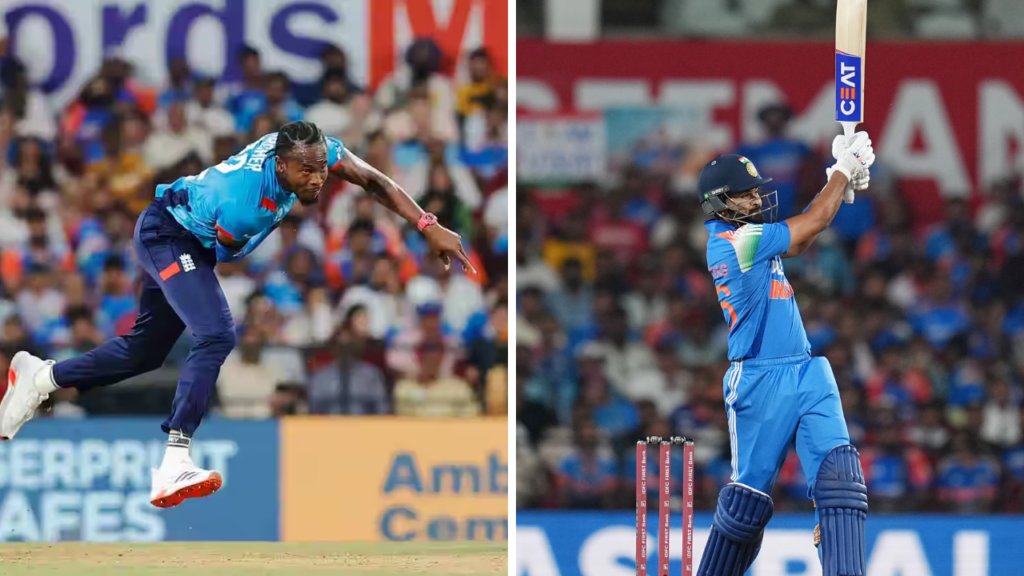
‘Matches are not won by highlights, but what happened in between these highlights,’ said Harsha Bhogle, one of my all-time favourite cricket broadcasters. The more I watch cricket, I feel this is the bottom line of all the matches. I love the small moments, the sub-plots, the minute phases of the game which ultimately lead to the grand climax.
The first ODI between India and England at Nagpur was no exception. India managed to keep England to 248, thanks to a good, all-round show from the bowlers. The floodlights lit up and in walked the openers, Yashasvi Jaiswal and captain Rohit Sharma. All eyes were on the captain, especially with Virat Kohli failing to clear the fitness test before the match and sitting out. Jofra Archer steamed in with the white ball in his hand and immediately started asking questions. A fast bowler regularly hitting 145 KPH+ is an absolute delight for a cricket lover. Archer showed in today’s world of slogging and powerplays, raw pace remains what it was in the era of Marshall-Garner-Holding. Jaiswal was clearly uncomfortable against the speedster, playing and missing consistently before eventually edging one. The celebratory leap from Archer post that wicket only validated the hard yards put in by the bowler for it.
In the next over, Rohit skied one delivery from Saqib Mahmood for a simple catch to Liam Livingstone. It seemed he was a touch early on the shot. Suddenly 19-2 in 5.2 overs saw some nervous faces in the Indian dug-out. The English bowlers had smelled blood. Shreyas Iyer walked in at No. 4 after a stellar Vijay Hazare and Syed Mushtaq Ali Trophy season. What followed next was absolute carnage. Shubman Gill, the vice-captain, was happy to watch from the other end as Iyer carted the fast bowlers all around the park to race to his half-century and set up quite an easy Indian win.
However, the mini-battle between Shreyas and Archer was the takeaway of the match for me. Archer had a simple plan in place. He would bowl short and fast to Iyer. For a long time, Iyer had this weakness against the faster bowlers. He was dismissed several times in the IPL with the same tactic. Predictably, Archer fell back on this plan. England captain Jos Buttler got a helmet on and stood just 10m away from Shreyas at forward short leg. A leg slip was called in and square leg was sent back to the ropes for the mistimed pull or hook shot. Clearly, it would be trial by fire.

What did Iyer do? He did a couple of things. The initial trigger movement saw him go back deep in his crease. Taking a cue from the captain’s dismissal, he also ensured one more thing. He would play the ball at the last moment. Now, what does this tell you? Shreyas was well and truly ready for the short-ball ploy. By going deep in his crease, he had that fraction of extra time to take it on. And make no mistake, he was by no means looking to play Archer out. He was looking to fight fire with fire.
The results came in the very next over, with Iyer pulling Archer for a 83m six. He then finished the over with a 66m six over third man, with Archer’s pace and the perfectly timed ramp taking the ball all the way over the boundary cushions. England persisted with Archer for one more over after that. Archer, like any other fast bowler, decided to give Iyer the chin music one more time. But, oh boy, did Iyer make a symphony out of that tune or what? He slammed the last ball of that over to the fence with a fierce pull.
Saqib Mahmood being replaced by Brydon Carse didn’t help England’s cause either. By that time, England’s bowlers went to plan B and started bowling fuller. Iyer was ready for it, having seen through the difficult phase with flying colours. Three boundaries in the first Carse over all but sealed the deal for India in the chase.
The scoreboard reads Iyer trapped LBW on 59 by Jacob Bethell. It doesn’t tell you that he had taken the wind out of the proud English fast bowling sails over the course of getting to that score.
Also Read: Washington Sundar – The ‘Aman’ Of Indian Cricket Team



